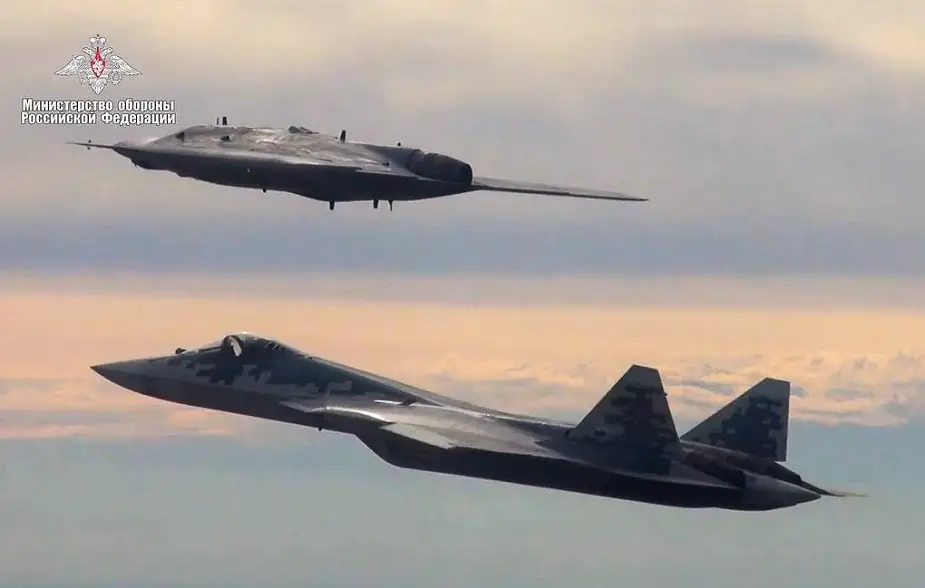Combat drone engagement is becoming a usual practice. The unmanned aerial vehicles (UAV) fight air defense and often win. Swarm tactic of drone engagement has emerged. It brings drone control to the foreground, as the usual operator-drone scheme often fails. Other technologies are necessary, the online Army Standard publication said.
Follow Air Recognition on Google News at this link
 Su-57 fighter jet and Okhotnik UAV. The control of a heavy and high-speed drone from a one-seater cockpit isa complicated task. Naturally, it is impossible to engage in combat and simultaneously control both the jet and the drone without artificial intellect and a high automation. The drone has to independently fulfil most routine missions, including takeoff, jet escort and landing (Picture source: Russian MoD )
Su-57 fighter jet and Okhotnik UAV. The control of a heavy and high-speed drone from a one-seater cockpit isa complicated task. Naturally, it is impossible to engage in combat and simultaneously control both the jet and the drone without artificial intellect and a high automation. The drone has to independently fulfil most routine missions, including takeoff, jet escort and landing (Picture source: Russian MoD )
Drones are engaged in missions where the use of manned aircraft is unjustified by a high risk of losing the crew or the craft or by economic considerations. The missions include, in particular, reconnaissance, monitoring in various frequency bands, data transmission and strikes. Drone engagement range is being expanded to deliver cargoes and create unmanned transportation systems.
The problem is that interaction with drones generates considerable information flows to unit commanders for analysis and decision-making. In a rapidly changing situation, the flows exceed the volumes comprehensible for a human to make adequate decisions. The flows considerably grow if a group of drones is engaged.
Artificial intelligence (AI) can help the commanders to assess the information and make correct decisions, as well as teach the drones to operate independently and control the group if contact with the operator is lost. The sphere reports major progress in the world. Russia is also developing the technologies.
A team from the Zhukovsky Institute led by Professor and Director of the Robotized Aviation Systems Vladimir Kutakhov is designing methods to use artificial intelligence for the control of major intellectual unmanned aerial systems. The research has to teach the drones to independently make decisions depending on the situation.
Intellectual actions of major related technical means should boost the use of unmanned vehicles. Artificial intelligence of major technical systems will play a key role and improve the flight characteristics of unmanned vehicles.
“The more sophisticated the vehicle is, the more it is clear that it is senseless to consider a drone separately from its functional capabilities. It is not difficult to make any vehicle remotely operated. It is the task of the past. Now it is necessary to create controls to make a vehicle both unmanned and robotic. It has to have a certain level of artificial intelligence, algorithms and the ability to independently make decisions in an assigned framework and operate in a group,” Kutakhov said.
Group engagement of drones can increase combat effectiveness several times. One of the approaches unites vehicles designed for a specific task. It can have a reconnaissance craft for optical, radar and electronic reconnaissance, a craft to transmit signals, and transportation and attack drones.
















